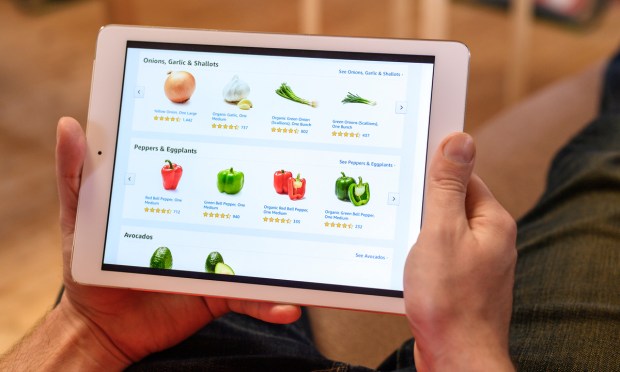Can eGrocery’s Profitability Challenges Be Fixed With AI Procurement?

As grocers struggle to make their eCommerce businesses as profitable as brick-and-mortar channels, artificial intelligence (AI) can help close the gap.
In an interview with PYMNTS, Alex Weinstein, chief digital officer of AI-powered online grocer Hungryroot, explained that predictive inventory capabilities can boost margins by reducing waste.
“AI can help create a more profitable business. … A typical grocery store, in their own fulfillment center, ends up throwing away 10% of their inventory, [according to a] USDA report. They throw their groceries away because [the inventory] goes bad,” Weinstein said. “For us, because we’re able to precisely predict what consumers are going to want and buy [just that amount], that obviously creates for a much more profitable business.”
These kinds of upgrades can be key, especially in the United States, where grocers are behind comparable countries in terms of eGrocery margins, as Tim Steiner, CEO of multinational grocery technology company Ocado Group, noted to analysts on an earnings call Tuesday (July 18).
Additionally, AI can also help drive sales, Hungryroot observes. For the grocer, which attributes 70% of its sales to its AI capabilities, net revenue has grown by an order of magnitude in recent years, from $25 million in 2019 to $237 million in 2022.
“I very much expect that AI applications in a thin-margin space like grocery will help both with consumer loyalty and with operational efficiency,” Weinstein stated.
Overall, digital channels account for a small but growing share of the total U.S. grocery market, according to data from PYMNTS’ study “Tracking the Digital Payments Takeover: Catching the Coming eCommerce Wave,” created in collaboration with Amazon Web Services. The report, which draws from an April survey of a census-balanced panel of nearly 2,700 U.S. consumers, reveals that, while 12% of grocery purchases are made via digital channels, one in three shoppers expects to step up their eGrocery engagement in the next year.
Plus, online grocery orders tend to be of significantly greater value than brick-and-mortar purchases. The study found that consumers spend $88 on the average in-store purchase, while they spend $116 — a 32% increase — on the average digital order.
Moreover, Weinstein contended, AI can also help alleviate consumers’ inflation concerns by offering them the option to cut out wasteful spending.
“In terms of consumer sentiment,” Weinstein said, “inflation is right up top as far as their concerns for the economy, so this still is a very significant issue for them.”
Indeed, consumers are minding their grocery spending in light of inflation. Research from PYMNTS’ Consumer Inflation Sentiment series, “Consumer Inflation Sentiment Report: Consumers Cut Back by Trading Down,” for which we surveyed more than 2,000 U.S. consumers in April, revealed that 57% of shoppers have cut down on nonessential grocery spending in response to rising prices. Plus, 47% have switched to sellers that offer better prices.
Weinstein cited USDA findings that consumers end up not using 21% of the food they buy at the grocery store, on average, noting that AI-backed recipe plans and recommendations enable consumers to more accurately buy what they need or will actually eat, helping to reduce their unnecessary food spending.
“So, if you can reduce that food waste,” Weinstein said, “you’re actually counteracting so much of that inflation.”

